The Ultimate Guide to Quilt Sizes: Everything You Need to Know
Are you ready to dive into the cozy world of quilting? Whether you're a seasoned quilter or a curious beginner, understanding quilt sizes is absolutely essential. Choosing the right dimensions for your projects can make all the difference between a quilt that fits perfectly and one that leaves you scratching your head in confusion. This guide is crafted to provide you with a comprehensive overview of quilt sizes, helping you select the right dimensions for your quilting endeavors, understand standard measurements, and explore various quilt styles and their applications.
Quilting isn't just about stitching fabric together; it's about creating something that resonates with warmth and personality. Imagine wrapping yourself in a quilt that fits your bed like a glove or hanging a stunning wall quilt that draws compliments from every guest. The right size not only enhances the functionality of your quilt but also its aesthetic appeal. So, are you excited to learn more? Let’s unravel the mystery behind quilt sizes together!
In the quilting community, there are several standard quilt sizes that you’ll encounter frequently. These sizes serve as a guideline, helping you determine the dimensions that will best suit your needs. Here’s a quick rundown of the most common quilt sizes:
| Quilt Type | Dimensions (inches) |
|---|---|
| Baby Quilt | 36 x 52 |
| Twin Quilt | 66 x 90 |
| Full Quilt | 81 x 96 |
| Queen Quilt | 90 x 108 |
| King Quilt | 108 x 120 |
These dimensions are designed to fit standard bed sizes, but keep in mind that personal preferences and specific design choices can influence the final size. For instance, some quilters prefer larger overhangs on their quilts, while others might opt for a more tailored look. Understanding these standard sizes will empower you to make informed decisions as you embark on your quilting journey.
Now that you've grasped the standard quilt sizes, how do you choose the right one for your specific project? The answer lies in considering the intended use of the quilt. Are you making a quilt for a bed, a cozy lap quilt for snuggling on the couch, or perhaps a stunning wall hanging to showcase your artistic flair? Each purpose has its own ideal dimensions.
When selecting a quilt size, think about the following factors:
- The Recipient's Preferences: If you're making a quilt as a gift, consider the recipient's style and needs.
- The Quilt's Purpose: Is it purely decorative, or will it be used for warmth? This can significantly influence size.
- Available Fabric: The amount of fabric you have can also dictate how large or small your quilt can be.
As you ponder these factors, don't forget to take into account the dimensions of the room where the quilt will be used. The size of your quilt can affect the overall look and feel of the space. A large quilt in a small room can overwhelm the area, while a small quilt in a spacious room may feel lost. Aim for a harmonious fit that enhances the aesthetic appeal of your home.
When considering room dimensions, think of your quilt as a piece of art. Just like a painting, the size needs to complement the space. For example, if you’re planning to drape a quilt over a king-sized bed, a quilt that’s too small will look out of place. Conversely, a massive quilt in a compact bedroom can make the space feel cramped. Striking the right balance is key.
Your personal style plays a crucial role in determining quilt size as well. If you love bold, oversized patterns, you might lean towards larger quilts. On the other hand, if you prefer intricate designs with lots of detail, smaller quilts may be more your style. Ultimately, your quilt should reflect your unique taste and vision, making it a true representation of you.
One of the exciting aspects of quilting is the ability to customize your projects. If you find a quilt pattern that you absolutely adore but it doesn’t quite fit your needs, don't fret! You can easily resize quilt patterns to suit your specific dimensions. Techniques such as adjusting the number of blocks or modifying the borders can help you maintain the integrity of the design while achieving the perfect size.
Different quilt sizes cater to various uses, and understanding these can enhance your quilting experience. For example, lap quilts are typically smaller and perfect for keeping warm while relaxing, while table runners can add a touch of elegance to your dining decor. Each type of quilt serves a unique purpose, and knowing their standard dimensions can help you create functional and beautiful pieces.
Lap quilts are generally around 50 x 65 inches, making them ideal for snuggling on the couch or adding a decorative touch to your chair. They are versatile and can be adapted to fit your personal style, whether you prefer bright colors or muted tones. Feel free to adjust the dimensions to make it more comfortable for your use!
Wall hangings can vary widely in size, but a common dimension is around 30 x 40 inches. When choosing a size for your wall quilt, consider the wall space you have available. A larger quilt can serve as a stunning focal point, while a smaller piece can complement existing decor. The right size can transform your wall into a canvas of creativity!
Q: What is the best size for a beginner quilt?
A: For beginners, starting with a lap quilt or a baby quilt is ideal. These sizes are manageable and allow you to practice your skills without feeling overwhelmed.
Q: How do I calculate the fabric needed for a quilt?
A: To calculate fabric requirements, consider the quilt size and the pattern. Most quilt patterns will provide a fabric requirement list based on the dimensions.
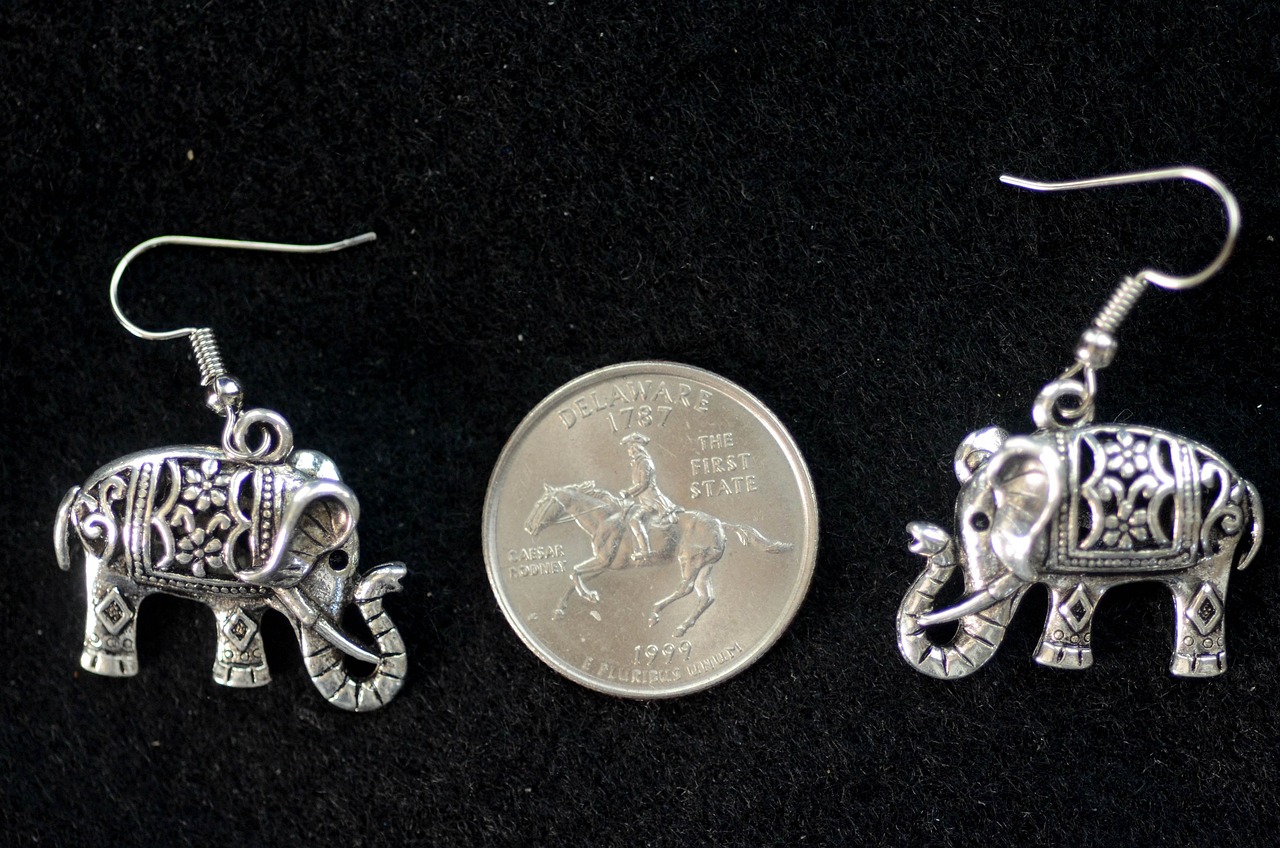
Understanding Standard Quilt Sizes
When diving into the world of quilting, one of the first things you'll encounter is the importance of standard quilt sizes. These dimensions are not just arbitrary numbers; they serve as a guideline to help you create quilts that fit perfectly for their intended use. Whether you're crafting a cozy baby blanket or a luxurious king-size quilt, understanding these sizes can make all the difference in your project’s success.
In the quilting community, certain sizes have become the norm. Here’s a quick rundown of the most common quilt sizes:
| Quilt Type | Dimensions (inches) |
|---|---|
| Baby Quilt | 30 x 40 |
| Twin Quilt | 66 x 90 |
| Full Quilt | 81 x 96 |
| Queen Quilt | 90 x 108 |
| King Quilt | 108 x 108 |
These sizes can significantly influence your quilting projects. For instance, a baby quilt is typically smaller and perfect for cribs or as a stroller blanket. In contrast, a king quilt is designed to cover larger beds, providing warmth and style in equal measure. Understanding these standard sizes not only helps in planning your fabric requirements but also ensures that your quilt serves its purpose effectively.
But why stop at just the basic sizes? As you gain more experience and confidence in your quilting skills, you might find yourself wanting to create something unique. Maybe you’re inspired by a particular design or fabric, and you want to adjust the dimensions to fit your vision. This is where the fun begins! Knowing the standard sizes gives you a solid foundation, allowing you to modify patterns and create quilts that are tailored to your needs.
In summary, grasping the concept of standard quilt sizes is essential for any quilter. It helps you plan, design, and execute your projects with confidence. The next time you embark on a quilting adventure, keep these dimensions in mind, and let them guide you towards creating beautiful, functional pieces.
- What is the best size for a lap quilt?
A lap quilt typically measures between 50 x 60 inches and 60 x 72 inches, making it perfect for snuggling on the couch. - Can I use a quilt size that’s not standard?
Absolutely! While standard sizes are helpful, you can always create custom sizes to fit your specific needs. - How do I determine the size of a quilt for a bed?
Measure your mattress dimensions and add extra inches for draping and tucking in, depending on your style preference.

Choosing the Right Quilt Size for Your Project
When it comes to quilting, one of the most crucial decisions you'll make is choosing the right size for your project. It can feel a bit overwhelming, especially if you're new to the craft or if you're working on a special gift. But fear not! Understanding how to select the appropriate quilt size can simplify your quilting journey and ensure that your finished piece is both functional and visually appealing.
First things first, consider the intended use of your quilt. Are you crafting a cozy blanket for a twin bed, or perhaps a decorative piece for your living room? The purpose of the quilt will guide you in determining the right dimensions. For instance, a baby quilt typically measures around 36” x 52”, making it perfect for cribs, while a lap quilt usually falls in the range of 36” x 48” to 50” x 60”, ideal for snuggling on the couch.
Another vital aspect to think about is the recipient's preferences. If you're making a quilt for a loved one, consider their style and how they might use the quilt. Do they prefer larger, more dramatic pieces, or are they drawn to smaller, more intimate quilts? This is where personal taste comes into play, and it's a great opportunity to infuse your creativity into the project.
Additionally, you should also take into account the available fabric. Sometimes, the fabric you have on hand can dictate the size of the quilt. If you have a limited amount of fabric, you might need to adjust your dimensions accordingly. It’s always a good idea to plan out your fabric usage ahead of time to avoid any surprises down the road. You can even create a fabric layout plan to visualize how your chosen dimensions will work with the materials you have.
Now, let’s talk about the room dimensions where the quilt will be used. If the quilt is destined for a bed, ensure that it not only fits the bed size but also complements the room's overall aesthetic. A quilt that hangs too low or is too small can throw off the entire look of the space. For example, a queen-size quilt generally measures 90” x 90”, which provides a nice drape on most queen beds, but if the room has a modern decor, you might want to consider a more tailored look.
Finally, your personal style and design preferences should also influence your quilt size choice. Are you drawn to bold patterns or subtle designs? Do you like large, statement quilts or smaller quilts that can be layered? Your unique vision will help you determine not only the size but also the overall design of your quilt. Remember, quilting is an art form, and your quilt should reflect your individuality.
In summary, choosing the right quilt size for your project is about balancing functionality with personal expression. By considering the intended use, the recipient's preferences, available fabric, room dimensions, and your personal style, you can create a quilt that is not only the right size but also a cherished piece of art.
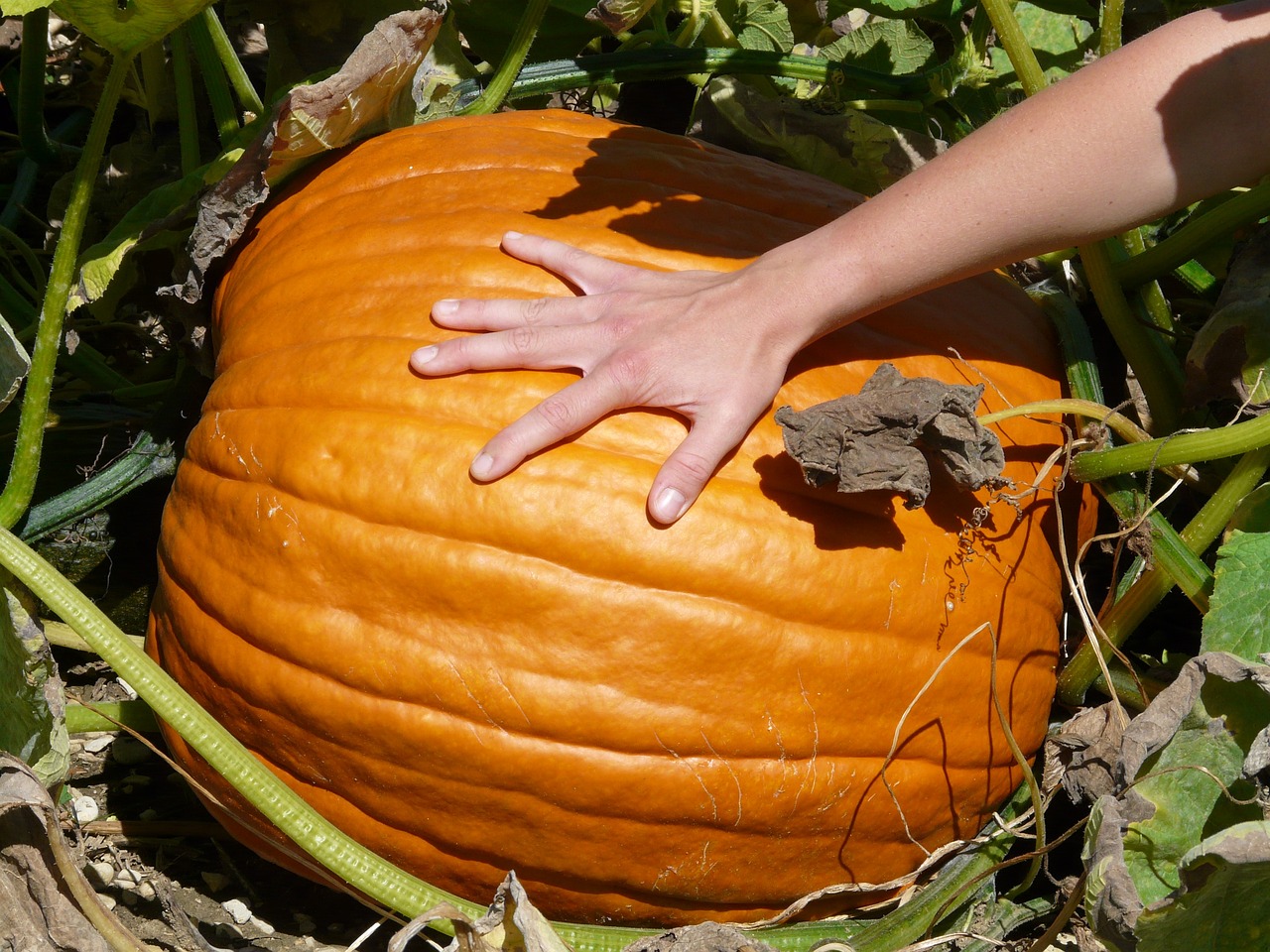
Factors to Consider When Selecting Size
Choosing the right quilt size can feel like navigating a maze, especially with so many options available. But fear not! There are several key factors to consider that can simplify your decision-making process. First and foremost, think about the recipient’s preferences. Are you making a quilt for a child who loves dinosaurs or a grandparent who enjoys floral patterns? Understanding the recipient's tastes can guide your size choice, ensuring the quilt is not only functional but also a cherished item.
Next, consider the purpose of your quilt. Will it be a cozy addition to a bed, or perhaps a decorative piece for a wall? Each purpose has its own set of ideal dimensions. For instance, a bed quilt typically needs to drape over the sides of the mattress, while a wall hanging can be smaller and more tailored to fit a specific space. If you're crafting a quilt as a gift, think about how it will be used—will it be snuggled under during movie nights, or displayed as a work of art?
Another important factor is the available fabric. Before you get too attached to a particular quilt size, check your fabric stash or consider how much fabric you can purchase. Some sizes might require more fabric than you have on hand, which could lead to a last-minute scramble to find matching materials. If you're working with limited fabric, you might need to adjust your size expectations to ensure you can complete your project without compromising on quality.
Additionally, think about the room dimensions where the quilt will be used. A large quilt in a small room can feel overwhelming, while a tiny quilt in a spacious area might get lost. Consider the scale of the room and how the quilt can complement the existing decor. A quilt can serve as a statement piece, so it’s essential to choose a size that enhances the overall aesthetic of the space.
Finally, your personal style plays a crucial role in size selection. Are you drawn to oversized, dramatic designs, or do you prefer something more modest and understated? Your unique taste should shine through in your quilt, so don’t hesitate to let your personality guide your size choice. Remember, quilting is as much about self-expression as it is about functionality!
By weighing these factors—recipient preferences, quilt purpose, available fabric, room dimensions, and personal style—you'll be well-equipped to select the perfect quilt size for your next project. Happy quilting!
- What are the standard sizes for quilts?
Standard quilt sizes typically include baby (36" x 52"), twin (66" x 90"), full (81" x 96"), queen (90" x 108"), and king (108" x 96"). - How do I resize a quilt pattern?
To resize a quilt pattern, you can adjust the dimensions of the blocks and sashing, or add or remove blocks to fit your desired size. - What is a lap quilt?
A lap quilt usually measures around 50" x 65" and is designed to provide warmth while sitting on a couch or chair. - Can I use a quilt for wall decor?
Absolutely! Quilts can make stunning wall hangings, and their size can be tailored to fit the wall space you have in mind.
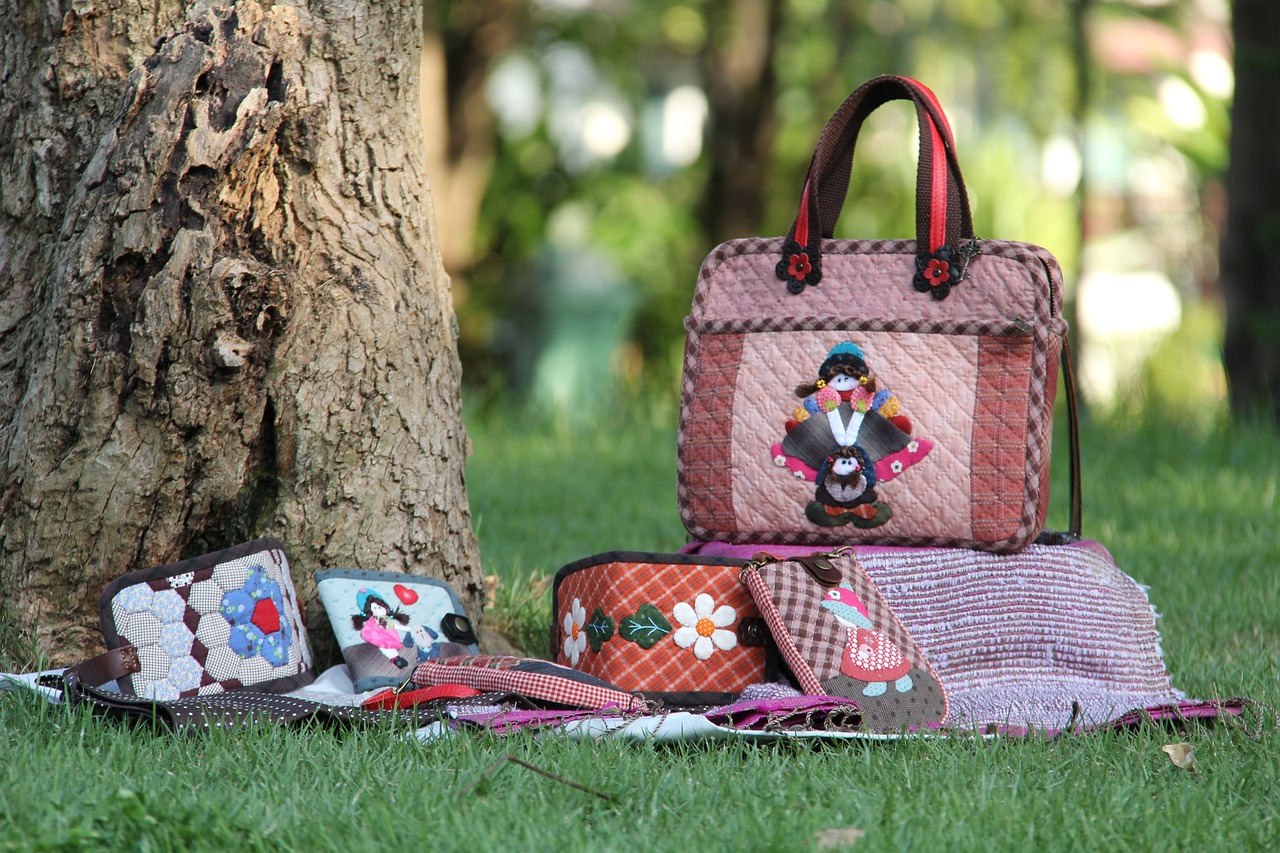
Room Dimensions and Quilt Size
When it comes to quilting, understanding how room dimensions influence quilt size is crucial for achieving a harmonious look in your space. Imagine walking into a room where the quilt hangs just above the bed, perfectly framing the headboard and adding a splash of color without overwhelming the area. This is the magic of selecting the right quilt size based on the dimensions of the room. If the quilt is too small, it can appear lost against the backdrop of your decor, while a quilt that’s too large can dominate the space, making it feel cramped.
To ensure your quilt fits well within your room, consider the following factors:
- Wall Space: Measure the wall where the quilt will be displayed. A quilt that’s too small can look insignificant, while a large quilt can create a stunning focal point.
- Furniture Placement: Think about how the quilt will interact with the furniture in the room. For instance, a large quilt hanging over a couch or bed should complement the furniture’s size and style.
- Color and Pattern: The colors and patterns of your quilt should harmonize with the existing decor. A bold, vibrant quilt can energize a neutral room, while a subtle quilt can create a serene atmosphere.
Furthermore, it’s essential to remember that the quilt's size should not only fit the physical dimensions of the room but also the overall aesthetic you wish to achieve. For example, if you’re going for a cozy, inviting vibe, a larger quilt that drapes over the sides of the bed can create warmth and comfort. On the other hand, if you prefer a more minimalist approach, a smaller quilt or a wall hanging might be the perfect choice.
In addition to these considerations, think about the functionality of the quilt. Will it be used primarily for decoration, or will it serve as a functional piece for warmth and comfort? This can also influence the size you choose. A quilt meant for everyday use might need to be larger to accommodate movement and layering, while a decorative piece can be more tailored to fit specific dimensions without sacrificing style.
Ultimately, finding the right quilt size for your room is about balance. It’s about creating a space that feels both inviting and visually appealing. So, take your time measuring and envisioning how your quilt will fit into your home. After all, a well-chosen quilt can transform a room from ordinary to extraordinary!
Q: What is the standard size for a twin quilt?
A: A standard twin quilt typically measures about 66 inches by 90 inches, making it perfect for twin beds.
Q: How do I determine the size of a quilt for a wall hanging?
A: The size of a wall hanging quilt can vary widely, but a common size is around 40 inches by 60 inches. It’s best to measure the wall space available and choose a size that complements the area.
Q: Can I resize a quilt pattern?
A: Yes, you can resize quilt patterns! Just make sure to maintain the proportions of the design to keep the integrity of the pattern.
Q: What size quilt should I use for a lap quilt?
A: A standard lap quilt usually measures around 50 inches by 65 inches, making it perfect for snuggling on the couch.

Personal Style and Quilt Size
When it comes to quilting, your personal style plays a pivotal role in determining the size of your quilt. After all, a quilt is not just a functional piece of fabric; it's a canvas for your creativity and a reflection of your aesthetic preferences. Imagine walking into a room where a quilt hangs perfectly on the wall, its colors and patterns resonating with the overall decor—this is the magic that happens when you align quilt size with your unique style.
Choosing the right size is not merely about following standard dimensions; it’s about creating a piece that feels right to you. For instance, if you love oversized, cozy quilts that envelop you in warmth, opting for a larger size like a king or queen quilt can be an excellent choice. Conversely, if you prefer modern, minimalist designs, a lap quilt or a smaller throw might be more in line with your vision. The key is to consider how the quilt will be used and displayed, ensuring it enhances the space rather than overwhelms it.
Additionally, think about the color palette and fabric choices that resonate with you. A vibrant, patterned quilt can become a stunning focal point in a neutral room, while a subtle, monochromatic quilt might blend seamlessly into a more eclectic space. Your style influences not just the fabric choices but also the dimensions. For example, if you’re creating a quilt for a specific chair or nook, measuring that space will help you decide on the ideal size. It’s like tailoring a dress; you wouldn’t wear a one-size-fits-all outfit when you can create something that fits you perfectly!
Incorporating your personal style into quilt size also means considering the intended use. Are you making a quilt for snuggling on the couch, or is it meant to be a statement piece in your decor? Each purpose may dictate a different size. For instance, a lap quilt typically measures around 50” x 70”, perfect for draping over your legs while watching a movie. On the other hand, a wall hanging might be more compact, allowing it to fit snugly within your chosen display area without overwhelming the wall space.
Ultimately, your quilt should be a true reflection of who you are. As you embark on your quilting journey, don’t hesitate to experiment with sizes that might seem unconventional. Perhaps a larger quilt in a small space could create a cozy atmosphere, or a small quilt in a larger room could serve as an intriguing accent. Remember, quilting is as much about self-expression as it is about functionality. So embrace your creativity, and let your personal style guide you in choosing the perfect quilt size!
- What are the standard sizes for quilts? Standard quilt sizes include baby (30” x 40”), twin (66” x 90”), full (81” x 96”), queen (90” x 108”), and king (108” x 108”).
- How do I choose the right size quilt for a specific bed? Measure your bed dimensions and consider how much overhang you desire. This will help you select a quilt size that fits well.
- Can I resize a quilt pattern? Yes! You can adjust quilt patterns by scaling them up or down, but be sure to maintain the proportions to preserve the design integrity.
- Are there specific sizes for lap quilts? Yes, lap quilts typically range from 50” x 70” to 60” x 80”, making them perfect for cozying up on the couch.
- What size is ideal for a wall hanging? Wall hangings can vary widely, but common sizes are around 24” x 36” or 36” x 48”, depending on the wall space available.
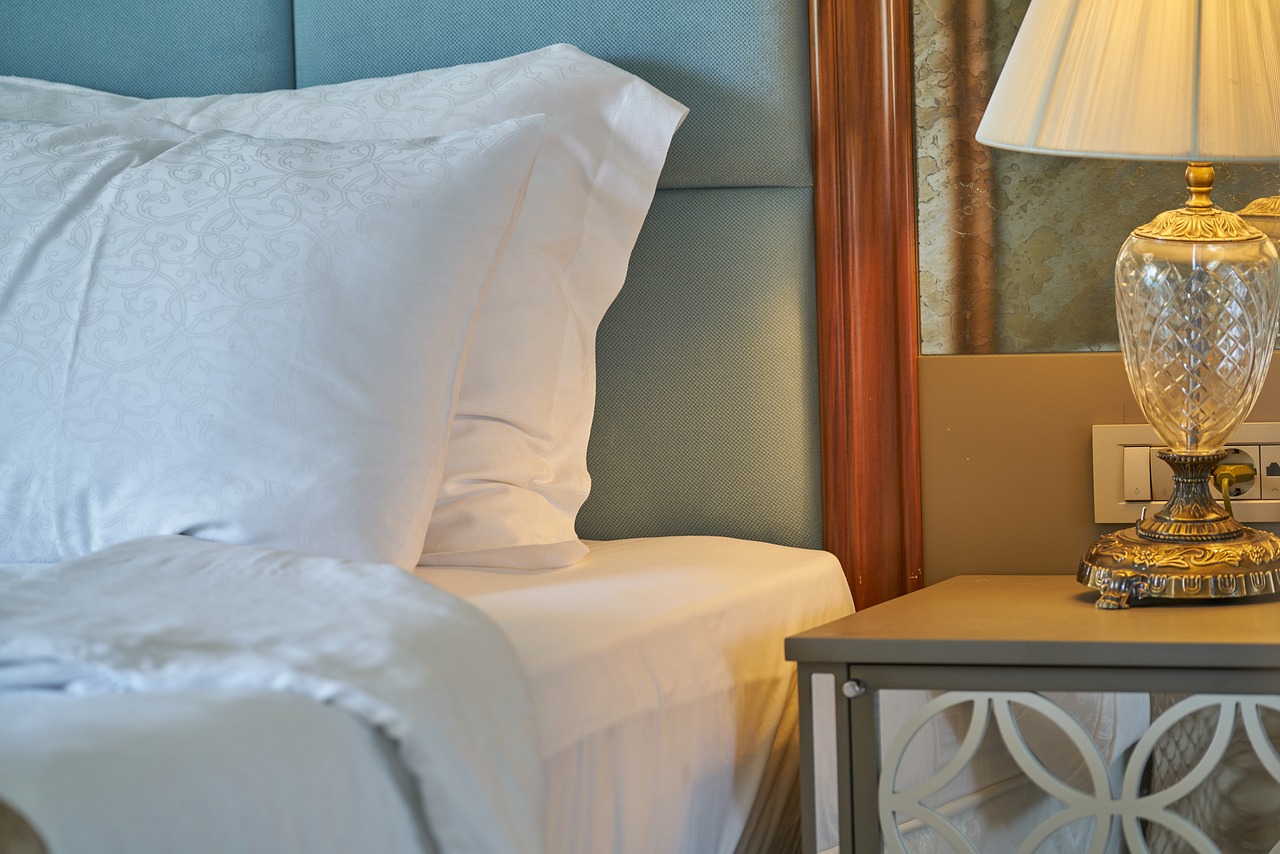
Adjusting Quilt Sizes for Custom Projects
When it comes to quilting, one size does not fit all. Whether you're crafting a cozy quilt for a loved one or creating a stunning piece for your home, adjusting quilt sizes for custom projects is essential to achieve the perfect fit. But how do you go about resizing a quilt pattern without compromising its beauty and integrity? Let’s dive into some practical techniques that will help you tailor your projects to your specific needs.
First off, it's crucial to understand the original dimensions of your quilt pattern. Most patterns will provide a standard size, but this is just a starting point. Before you start cutting fabric, consider the final use of your quilt. Are you making a throw for the couch, a bedspread, or perhaps a decorative wall hanging? Each of these purposes may require different dimensions, so keep that in mind as you adjust your pattern.
One effective method for resizing is to use a simple ratio calculation. For example, if you want to make a quilt that is 25% larger than the original design, you can multiply each measurement (length and width) by 1.25. This approach ensures that your quilt maintains its proportions, which is vital for aesthetic balance. Here's a quick reference table for adjusting sizes:
| Original Size (inches) | Adjusted Size (25% larger) |
|---|---|
| 60 x 80 | 75 x 100 |
| 50 x 70 | 62.5 x 87.5 |
| 40 x 60 | 50 x 75 |
Another handy technique is to consider the block size. If your quilt pattern consists of blocks, you can adjust the size of each block to achieve the desired quilt dimensions. For instance, if your blocks are originally 10 inches square, and you want to increase the quilt size, you might opt for 12-inch blocks instead. Just remember, if you change the block size, you'll need to recalculate the number of blocks required for the quilt.
Additionally, don't forget about seam allowances! When you adjust the size of your quilt, you must also account for the additional fabric that will be used in the seams. Typically, seam allowances are about ¼ inch, but this can vary based on your pattern or personal preference. Make sure to incorporate this into your calculations to avoid any surprises later on.
Finally, always create a test block before cutting your fabric. This step is crucial as it allows you to visualize how the adjusted size will look and feel. It also gives you the chance to make any necessary tweaks before you commit to the entire quilt.
In summary, adjusting quilt sizes for custom projects involves a few thoughtful calculations and considerations. By understanding the original dimensions, utilizing ratio calculations, considering block sizes, and accounting for seam allowances, you can create a quilt that not only fits perfectly but also showcases your unique style and creativity.
- What is the best way to resize a quilt pattern? Use ratio calculations based on your desired size increase or decrease, and adjust block sizes accordingly.
- How do I ensure my quilt maintains its proportions? Always multiply the original dimensions by the same factor to keep the proportions intact.
- Should I account for seam allowances when resizing? Yes, always factor in seam allowances to avoid miscalculations.

Common Quilt Sizes for Different Uses
When it comes to quilting, understanding the dimensions of different quilt sizes is crucial. Each quilt serves a unique purpose, and knowing the standard sizes can help you tailor your projects to meet specific needs. Whether you're cozying up on the couch with a lap quilt, dressing up your dining table with a runner, or adding a splash of color to your walls with a beautiful wall hanging, the right size makes all the difference. Let's dive into some common quilt sizes and their intended uses to help you make informed decisions in your quilting journey.
Starting with lap quilts, these delightful creations are designed for comfort and warmth. Typically, lap quilts measure about 45" x 60" or 50" x 70". They are perfect for snuggling up on chilly evenings or adding a touch of style to your living space. The beauty of lap quilts lies in their versatility; you can easily adjust the dimensions to suit your personal preferences or the specific needs of the recipient. For instance, if you’re making a lap quilt for a child, you might consider a smaller size that they can easily wrap around themselves.
Next, let’s explore table runners. These quilts not only protect your table but also enhance its aesthetic appeal. A standard table runner usually measures around 14" x 72" to 16" x 90", depending on the size of your table. When choosing a table runner, consider the style of your dining area and the season. For example, a wider runner can make a bold statement during holiday gatherings, while a narrower one can add a touch of elegance for everyday use.
Wall hangings are another fantastic way to showcase your quilting skills and add personality to your home decor. The sizes for wall hangings can vary significantly based on your design and the wall space available. Common dimensions range from 24" x 36" for smaller pieces to 60" x 80" for larger statement quilts. When selecting the size for a wall hanging, think about the balance of the room. A large quilt can serve as a focal point, while smaller pieces might work better in clusters or as part of a gallery wall.
In addition to these common sizes, there are also specialty quilts designed for specific uses. For instance, crib quilts typically measure around 36" x 52" and are perfect for babies, providing warmth and comfort. Similarly, throw quilts, which are great for draping over furniture, usually come in sizes like 50" x 60" or 60" x 70". These quilts are not only functional but also serve as decorative accents in your living space.
As you can see, quilt sizes vary widely based on their intended use. When embarking on your next quilting project, keep in mind the purpose of your quilt and the dimensions that will best suit it. By selecting the right size, you can ensure that your quilt not only meets functional needs but also reflects your personal style.
- What is the best size for a baby quilt? A typical baby quilt measures around 36" x 52".
- How big should a lap quilt be? Lap quilts usually range from 45" x 60" to 50" x 70".
- What size are standard table runners? They typically measure between 14" x 72" and 16" x 90".
- Can I customize quilt sizes? Absolutely! You can adjust quilt sizes to fit your specific needs and preferences.
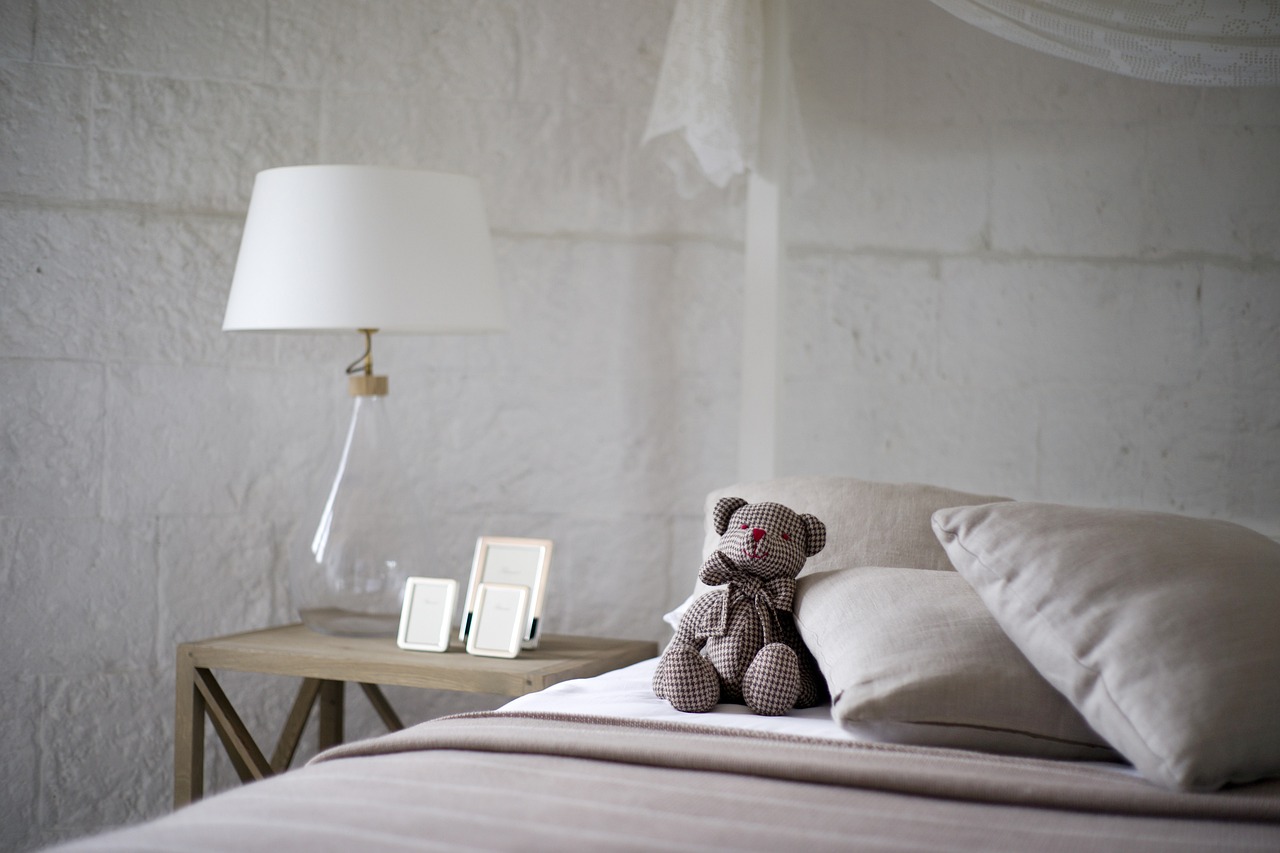
Lap Quilts and Their Dimensions
When it comes to cozying up on the couch or adding a touch of warmth to a chilly evening, lap quilts are the unsung heroes of the quilting world. These delightful creations are designed to be just the right size for snuggling, making them perfect for lounging or even as a decorative piece draped over your favorite chair. Typically, lap quilts measure around 50 inches by 70 inches, but don’t let that limit your creativity! The beauty of quilting lies in its flexibility, and you can easily adjust the dimensions to suit your personal style and needs.
So, why are lap quilts so popular? Well, they strike a perfect balance between size and functionality. They are large enough to cover your legs while you’re watching TV, yet small enough to be easily portable. Imagine taking your favorite lap quilt to a picnic or a chilly outdoor concert! Plus, they make fantastic gifts for loved ones, especially during the colder months. You can personalize them with colors and patterns that reflect the recipient’s taste, making each lap quilt a unique treasure.
When considering the dimensions of your lap quilt, think about the following factors:
- Purpose: Will it be used primarily for warmth, or for decorative purposes? This can influence how large or small you want to make it.
- Recipient: If you’re making it for someone else, consider their height and preferences. A taller person might appreciate a longer quilt.
- Fabric Choices: The type of fabric you choose can also impact the final dimensions. Heavier fabrics may require a bit more space for comfort.
To give you a clearer picture, here’s a simple table that outlines common lap quilt dimensions:
| Lap Quilt Type | Dimensions (inches) |
|---|---|
| Standard Lap Quilt | 50 x 70 |
| Large Lap Quilt | 60 x 80 |
| Mini Lap Quilt | 40 x 50 |
Ultimately, the dimensions of a lap quilt are just a guideline. The most important thing is to create a piece that resonates with you or the person you’re making it for. Whether you opt for a classic size or decide to go off the beaten path, each quilt carries the warmth of your creativity and love.

Wall Hangings: Size and Design Considerations
When it comes to wall hangings, size and design are two critical factors that can transform a simple quilt into a stunning focal point in your home. The dimensions of your wall hanging should not only complement the space but also reflect your personal style. So, how do you determine the perfect size for your quilted masterpiece? Let’s dive into some key considerations.
First off, think about the available wall space. A large wall can easily swallow a small quilt, making it look insignificant, while a massive quilt on a tiny wall can overwhelm the space. To create a balanced look, measure your wall and consider how much of it you want to cover. A good rule of thumb is to leave a few inches of space around the quilt to allow it to breathe and not appear cramped. For instance, if your wall is 60 inches wide, a quilt that is around 36-48 inches wide could work beautifully. This creates a nice visual frame around your art.
Next, consider the design elements of your quilt. The pattern, colors, and style should resonate with the room’s decor. If your space has a modern aesthetic, a geometric quilt might be the perfect choice. Conversely, if your home is filled with vintage charm, a classic floral design could enhance the overall vibe. The size of the quilt can also affect the perception of its design. Larger quilts tend to showcase intricate patterns better, while smaller ones may highlight specific details.
Another aspect to consider is the height at which to hang your quilt. Ideally, the center of the quilt should be at eye level, which is generally around 57-60 inches from the floor. This height allows for optimal viewing and appreciation of your handiwork. If the quilt is meant to be a statement piece, you might opt for a slightly higher placement, but be cautious not to place it too high, as it may lose its impact.
Moreover, think about the theme of the room. If your wall hanging is part of a gallery wall, you may want to mix and match sizes and styles for an eclectic look. In this case, consider creating a cohesive color palette to tie everything together. For a more uniform approach, sticking to similar sizes can create a streamlined appearance. You can also use a
| Wall Space (inches) | Suggested Quilt Size (inches) | Design Style |
|---|---|---|
| 30-40 | 20-30 | Small, intricate designs |
| 40-60 | 30-48 | Medium, balanced designs |
| 60+ | 48-72 | Large, bold statements |
Lastly, don’t forget about the hanging method. The way you hang your quilt can also influence its perceived size and design. Using traditional rods or modern clips can create different visual effects. A rod can allow the quilt to drape elegantly, while clips can give a more casual, relaxed feel. Experimenting with different hanging methods can add an extra layer of creativity to your wall hanging.
In conclusion, selecting the right size for your quilted wall hanging involves a mix of practical measurements and personal flair. By taking into account your wall dimensions, design preferences, and hanging methods, you can create a stunning piece that not only beautifies your space but also tells a story. So, get out there and start planning your next quilt project!
- What is the best size for a wall hanging quilt?
The best size depends on your wall dimensions and the overall design aesthetic of your space. Aim for a quilt that is 2/3 to 3/4 the width of the wall for balance. - How high should I hang my quilt?
The center of the quilt should generally be at eye level, around 57-60 inches from the floor. - Can I mix different quilt sizes on a gallery wall?
Absolutely! Mixing sizes can create an eclectic look, but make sure to maintain a cohesive color palette for harmony.
Frequently Asked Questions
- What are the standard quilt sizes?
Standard quilt sizes typically include baby quilts (30" x 40"), twin quilts (66" x 90"), full quilts (81" x 96"), queen quilts (90" x 108"), and king quilts (108" x 108"). These measurements can vary slightly based on personal preferences and specific patterns.
- How do I choose the right quilt size for my project?
Choosing the right quilt size depends on its intended use. For a bed, consider the mattress size and how much overhang you want. If it’s for a wall hanging, think about the wall space available. Always keep the recipient's needs in mind, especially for gifts!
- What factors should I consider when selecting a quilt size?
Key factors include the recipient's preferences, the quilt's purpose, and the available fabric. Also, consider how the quilt will fit in the space it’s intended for, ensuring it complements the room's dimensions and decor.
- Can I adjust quilt sizes for custom projects?
Absolutely! You can resize quilt patterns by adjusting the measurements of the blocks or by adding or subtracting borders. Just be sure to maintain the design's integrity so it still looks fabulous!
- What are the typical dimensions for lap quilts?
Lap quilts generally measure around 50" x 60". They’re perfect for snuggling up on the couch, but feel free to adjust the size to suit your comfort and style preferences!
- How do I choose the right size for a wall hanging?
When selecting a size for a wall hanging, consider the wall space you want to fill. A quilt that’s too small may get lost on a large wall, while one that’s too big can overwhelm the space. Aim for a balanced look!



















